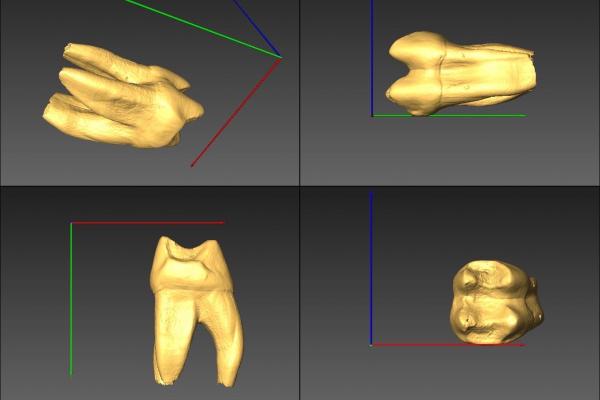Dr. Guatelli-Steinberg and Dr. Scott McGraw awarded NSF Grant

Congratulations to Dr. Debbie Guatelli-Steinberg (PI), Dr. Scott McGraw (co-PI) and team for their recent award of a National Science Foundation (@NSF) Grant for their project, “Analyzing African monkey teeth to strengthen dietary inferences from enamel thickness, distribution and prism orientation in paleoanthropology”. The team—also including Gary Schwartz (co-PI; Arizona State University), and Mackie O’Hara (GRA)—will be analyzing a collection of primate skeletons from the Taï Forest (Côte d'Ivoire) and other African field sites, housed at The Ohio State University.
The public abstract for this grant explains that,
Paleoanthropologists who seek to understand dietary adaptations in human ancestors study modern non-human primates to identify links between dental structure and function. Enamel, the hard, outer covering of a tooth, is one of the most scrutinized aspects of dental anatomy because it interacts with food directly. This research explores how the thickness and structure of tooth enamel, which appear to change over short evolutionary time periods, relate to specific aspects of diet and tooth function in primates. To achieve this goal, this research leverages a collection of primate skeletons housed at The Ohio State University, consisting of Old World monkey skeletons from the Taï Forest (Côte d'Ivoire) and other African field sites. Data on diet and tooth use associated with these skeletal remains provides opportunities to investigate how enamel variation in living primates relates to critical features of their diets and oral processing behavior. As a result of this work, a large collection of microCT scans (~ 400 teeth) [[see photo above]] and histological slides (60-80 teeth) of primates will be made available, thus enhancing infrastructure for both research and education. Involvement and training of undergraduates in this project contributes to the development of a STEM workforce. Communication of project findings via The Ohio State University's Anthropology Public Outreach Program will increase public engagement with science and technology. Finally, this research is associated with the Taï Forest Monkey Project, which has environmental, health, and educational benefits to local individuals.
This project fills gaps in paleoanthropologists’ understanding of how enamel evolves in response to specific aspects of diet and oral processing behavior. Currently, thick enamel in primates presents an ambiguous functional signal, suggesting adaptation to hard and/or abrasive diets. This research investigates whether aspects of enamel thickness distribution, and the angles that enamel prisms make with tooth wear surfaces, are associated with hard-object feeding (i.e., durophagy), potentially providing a basis for inferring adaptation to durophagy in fossil species. Further confounding paleoanthropological interpretation of enamel thickness is that thick enamel may signify adaptation to either habitual durophagy or to the consumption of hard foods only during periods when softer foods are not available, a so-called “fallback” feeding strategy. This work more fully assesses enamel thickness in primates that are habitual vs. fallback hard-food consumers, asking whether there are differences in enamel thickness distribution and/or enamel prism orientation related to these two adaptations. Additionally, investigating potential developmental differences in the thick enamel of species that belong to different evolutionary lineages elucidates developmental pathways underlying enamel's ability to evolve over short evolutionary time spans. Finally, previous studies have suggested that in leaf-eating primates, selection for thin enamel constrains the evolution of enamel; this project more fully assesses this suggestion using a sample of leaf-eating primates with wide dietary variation. Altogether, research into these related questions elucidates selection pressures shaping overall enamel thickness, enamel thickness distribution, and enamel structure, providing insight into evolvability and constraint in these features. In turn, these insights will form a more robust foundation for paleoanthropological inference about dietary adaptation gleaned from tooth enamel.
For any questions about the project, please contact Dr. Guatelli-Steinberg at Guatelli-Steinbe.1@osu.edu or Dr. Scott McGraw at mcgraw.43@osu.edu.
